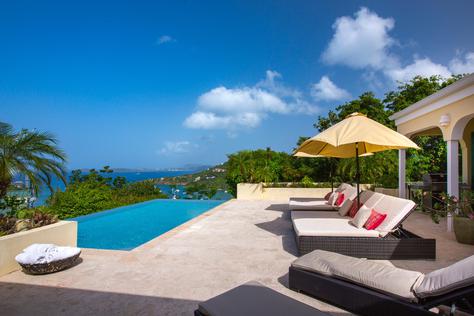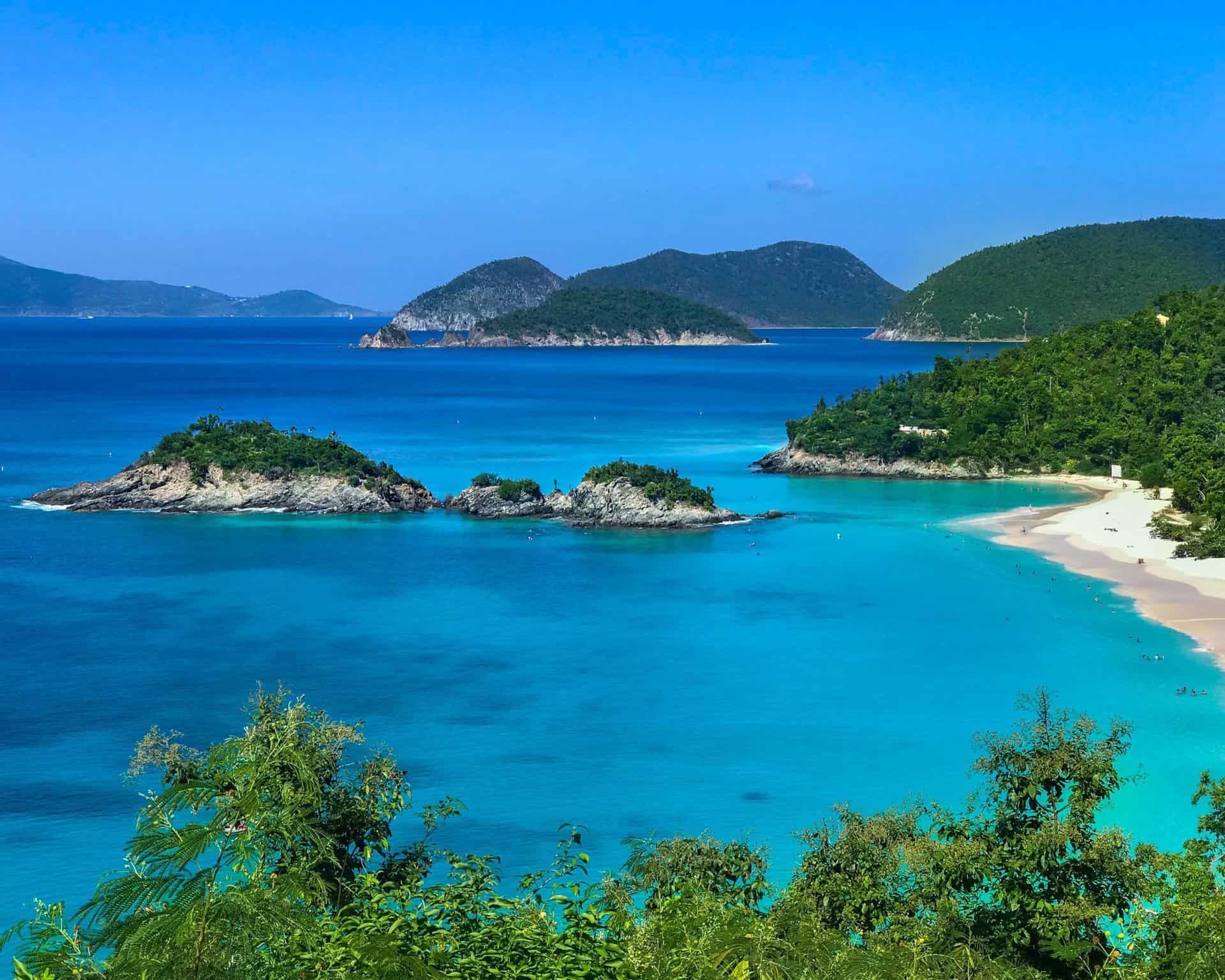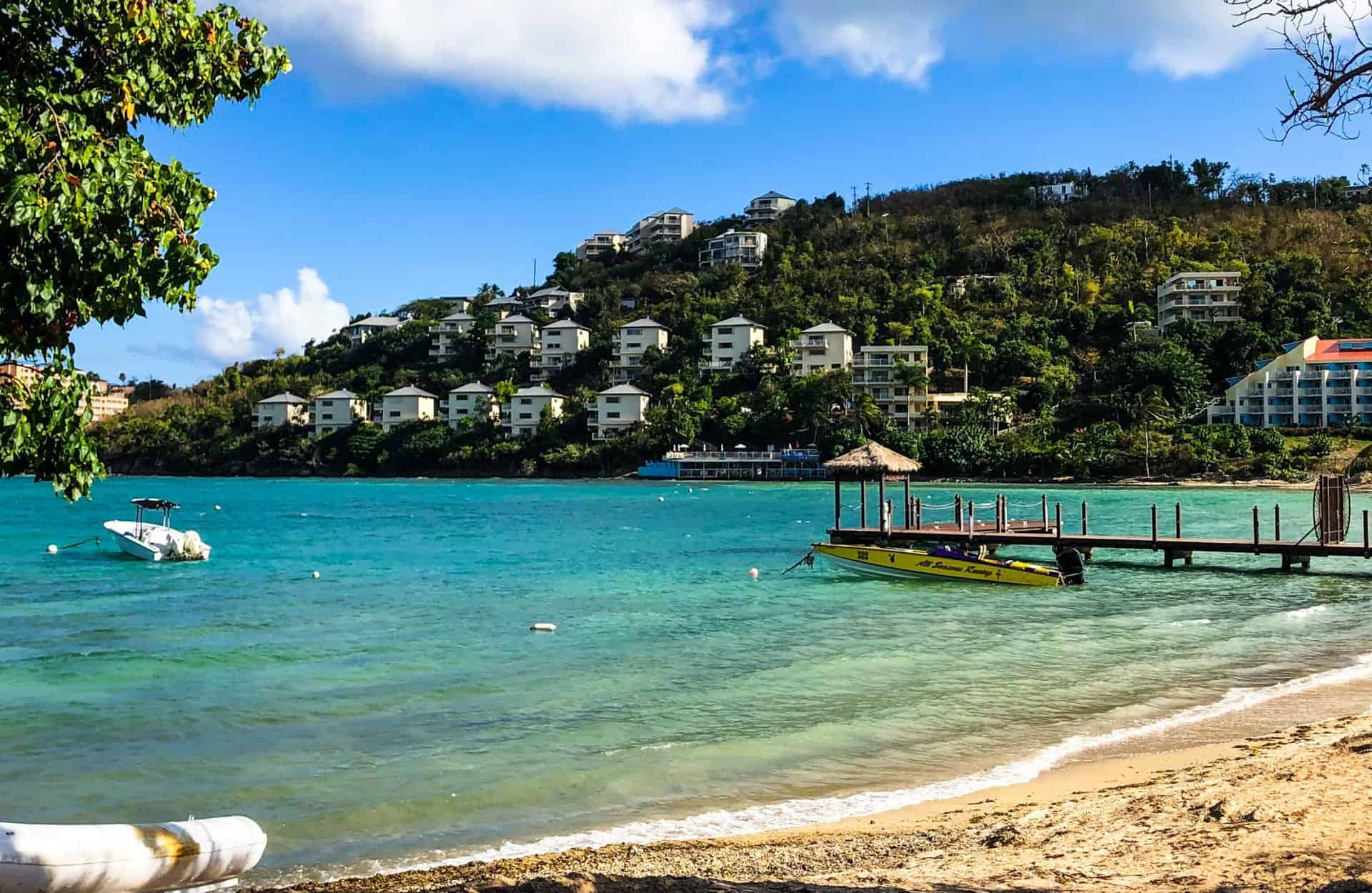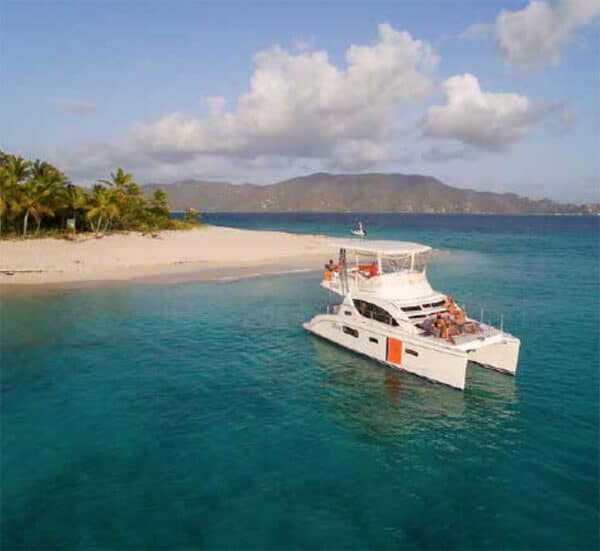If there’s one thing the USVI are known for, it’s their many excellent diving opportunities! Whether you want to stay in St. John, St. Croix, or St. Thomas, you should be able to find a spot to dive that’s not far from your accommodations. That’s because stunningly beautiful water surrounds each island, and it’s simply waiting for you to go explore it!
USVI Diving Overview
Before we go into the best scuba diving experiences in the USVI, let’s take a closer look at what each island has to offer. Here, you’ll discover trained scuba divers that can take you to look at some of the best of the best that USVI has to offer.
St. Thomas
St Thomas diving can be accomplished in many areas, but the best thing to do is sign up for a PADI Wreck Diver course. Once you sign up for one of their courses, you’ll be greeted by actual lost boats that sunk due to an accident. Additionally, you’ll get to see artificial reefs! The wrecks also include lost airplanes and even cars, and they’re usually filled with fantastic aquatic life.
One of the things that makes this one of the best diving areas is that there’s always a chance you’ll discover something that was previously unknown. This one fact, combined with PADI’s responsible diving practices, makes PADI Wreck Diver a unique and exciting experience. Please note that divers need to be at least 15 years old. It’s also necessary for you to earn your PADI Adventure Diver certificate or higher to enroll in the Wreck Diver Specialty course.
St. John
St John diving offers the PADI Underwater Naturalist course, which is a fantastic way to enjoy everything the islands have to offer. One of the things that really makes this course stand out is the way it’ll teach you to notice new things, even in areas you’re well acquainted with. You’ll learn about animal habitats, aquatic plants, underwater ecology, and symbioses, which will make it much easier for you to notice everything around you.
This St John scuba diving opportunity will teach you all about the local ecosystem. This experience is open to anyone 10 or older who has their PADI Open Water Divers or PADI Junior Open Water Divers certificate.
St. Croix
St Croix diving is where you can learn all about the exciting world of underwater photography! Sign up for PADI Digital Underwater Photographer course to learn the tips and tricks of capturing underwater photos. It doesn’t matter whether you’ve got a professional grade camera or a point and shoot camera, either. Everyone can take photographs that they’ll cherish forever!
Alternatively, you can sign up for PADI Drift Diver Course, which will make you feel like you’re flying through the water. This relaxing and exhilarating course teaches you about buoyancy control, navigation, buddy communication, and the use of surfacing equipment. To sign up, you must be 12 or older and have your PADI Open Water Diver or PADI Junior Open Water Diver certificate.
Best Time to Go Caribbean Diving
Scuba diving is possible year-round, thanks to the local climate. In fact, the average air temperature is 79-83 degrees Fahrenheit. It does tend to rain more from June through October, but you can still go USVI diving then.
9 of the Best Diving Areas in the USVI
Although there is truly no bad diving area in the USVI, there are a few that stand above the rest. Read on to discover the three best diving destinations per island. To make it even easier, we’ll note the diving experience required to complete each dive.
1. Frederiksted Pier – St. Croix
Frederiksted Pier is a beginner dive, so it’s a great place to explore diving when you’re not quite ready for one of the tougher dives. One of the things that makes this dive great is the abundance of macro life you’ll get to see. This dive is on the western shore of St. Croix, and it has two noteworthy areas. The first one is in the pilings, where you’ll only submerge to 25 feet but will see a lot of hard-to-find critters. Secondly, you can dive up to 50 feet from the end of the pier.
2. Butler Bay Wrecks – St. Croix
This intermediate dive features five unique wrecks. Exploring all five will usually require you to make two different dives. The deepest dive you can make is to 110 feet, and it’s a beauty! See the Rosaomaira there. The shallowest dive will be to 20 feet, where you’ll find the Northwind. As an added bonus, the Northwind was a prop used in the movie ‘Dreams of Gold: The Mel Fisher Story.’
3. Salt River Canyon – St. Croix
Are you more of an intermediate to advanced diver? Head to this well-kept secret off St. Croix’s north shore. Between the two walls is a quarter mile of some of the bluest water you’ll ever see. The walls also attract reef fish, and you might even be able to spot blacktip reef sharks and hammerheads in the deeper sections.
4. Cow and Calf – St. Thomas
Cow and Calf are sister diving sites for beginners that can easily be reached from St. Thomas or St. John. Cow Rock is a tunnel you can enter that’s filled with silversides. Even better, it ends with what’s known as ‘The Champagne Cork,’ which is a vertical opening that’ll pop you out into a staghorn coral reef.
NOTE: Be on the lookout for gray reef sharks, as they like to cruise past this diving site’s perimeters.
5. WIT Shoal II – St. Thomas
If you’re an intermediate diver, then you’re going to love checking out the WIT Shoal II wreck. This 330-foot freighter was originally sunk in a tropical storm back in 1984. Six months later, it was towed to just west of Saba Island.
There are two different spots that capture the attention of divers. The first is the pilothouse, which is located around 30 feet beneath the surface. The second requires you to submerge to 90 feet, where you’ll see the main ship. Aquatic life you can see here will include barracudas, groupers, sponges, and cup corals.
6. French Cap – St. Thomas
If you want to dive at French Cap, you’ll have to wait for absolutely perfect weather. It’ll be worth it, though, as this intermediate spot offers a few different places to dive. The best spot by far is the Pinnacle. Here you’ll see a lot of different aquatic life such as green morays, octopuses, reef fish, barracudas, and jacks. Another nice touch are the rock spires that are 55-feet long.
7. Eagle Shoals – St. John
Eagle Shoals is easy enough for beginners, and it just might be St. John’s best kept diving secret. Located off the east end of the island, this rarely visited spot should really capture more attention. That’s because of what’s known as ‘The Cathedral,’ which is a large, open chamber that can be reached by using multiple entryways. What makes it so special? Streams of sunlight enter the water and provide an amazing view from the ‘skylight.’
8. Congo Cay – St. Thomas and St. John
This beginner to intermediate diving excursion begins in a wide sand channel. You’ll be able to spot large southern stingrays as they forage for food or rest here. As you make your way through the rock spires to the coral-draped wall, prepare yourself to possibly see dolphins! Your diving instructor will take you to depths ranging from 25 to 80 feet.
9. Carval Rock – St. John
This intermediate diving spot requires you to go to the south side of a rock formation. Once there, it’s necessary to kick off hard against a surprisingly stiff current through ‘The Cut.’ What’s ‘The Cut,’ you ask? It’s a submerged passage that allows you to move through the rock!
As long as you allow the current to take you on a 360-degree ride, you’ll move past dramatic formations. You’ll also come upon a narrow canyon, where you’ll be able to see tarpon and baitfish. Descend to 80 feet by the east end’s sheer wall, and then enter the shallow coral gardens to end your dive. That’s where you can find octopus, reef squid, and nurse sharks.
Choosing the Best Place to Stay
No matter which of these diving spots is calling to you, they can all be easily accessed by choosing a luxury vacation rental from Vacation VI. In fact, you can decide to stay on St. John or St. Thomas. From there, you’ll have easy access to all three of the USVI, along with all the diving you can fit in.
When you book a vacation rental, you’ll have the experience of living more like a local! Additionally, you’ll be able to cook meals in your own kitchen, which is a fantastic way to save money while eating healthy. Book your luxury vacation rental today!












